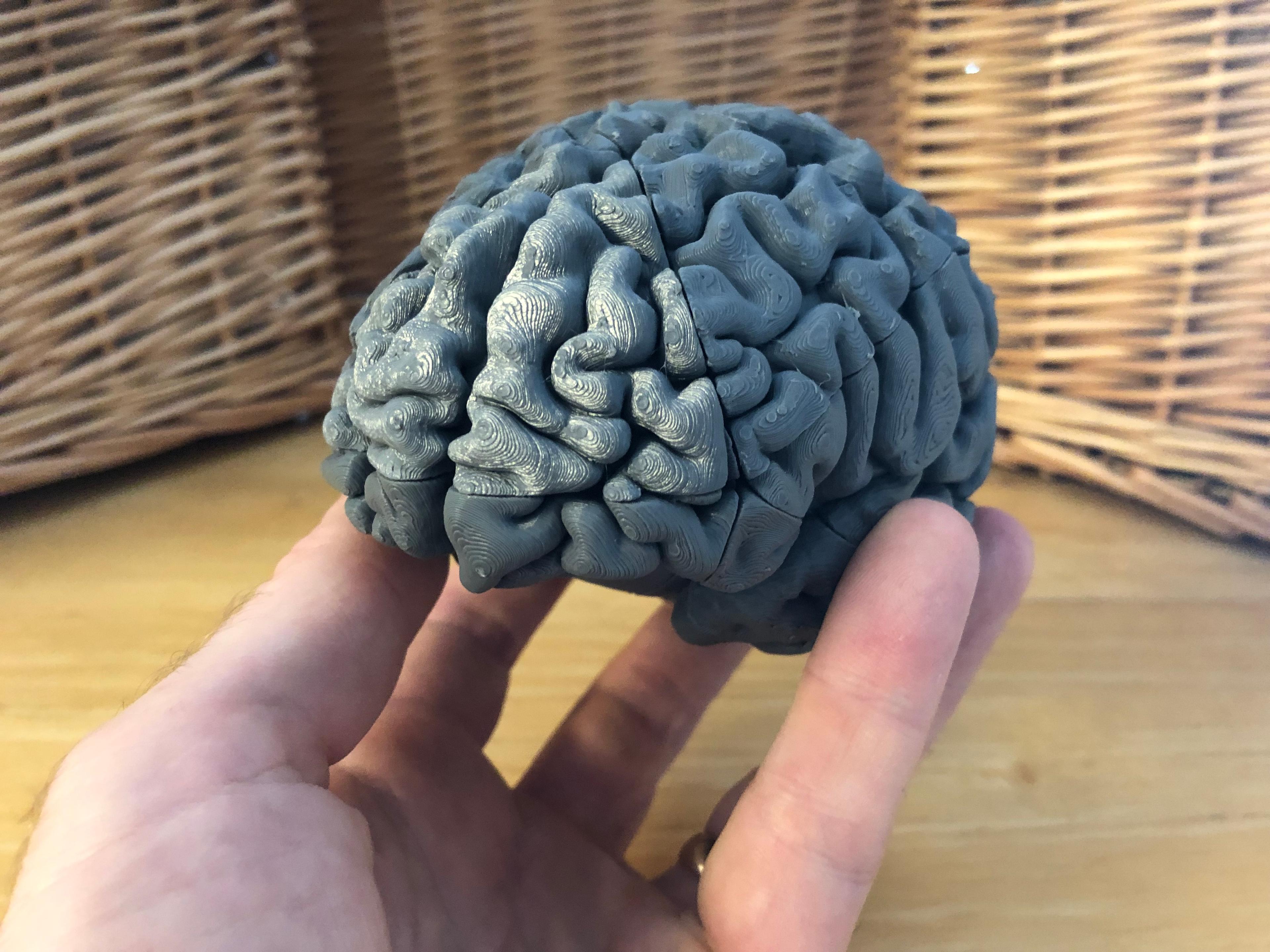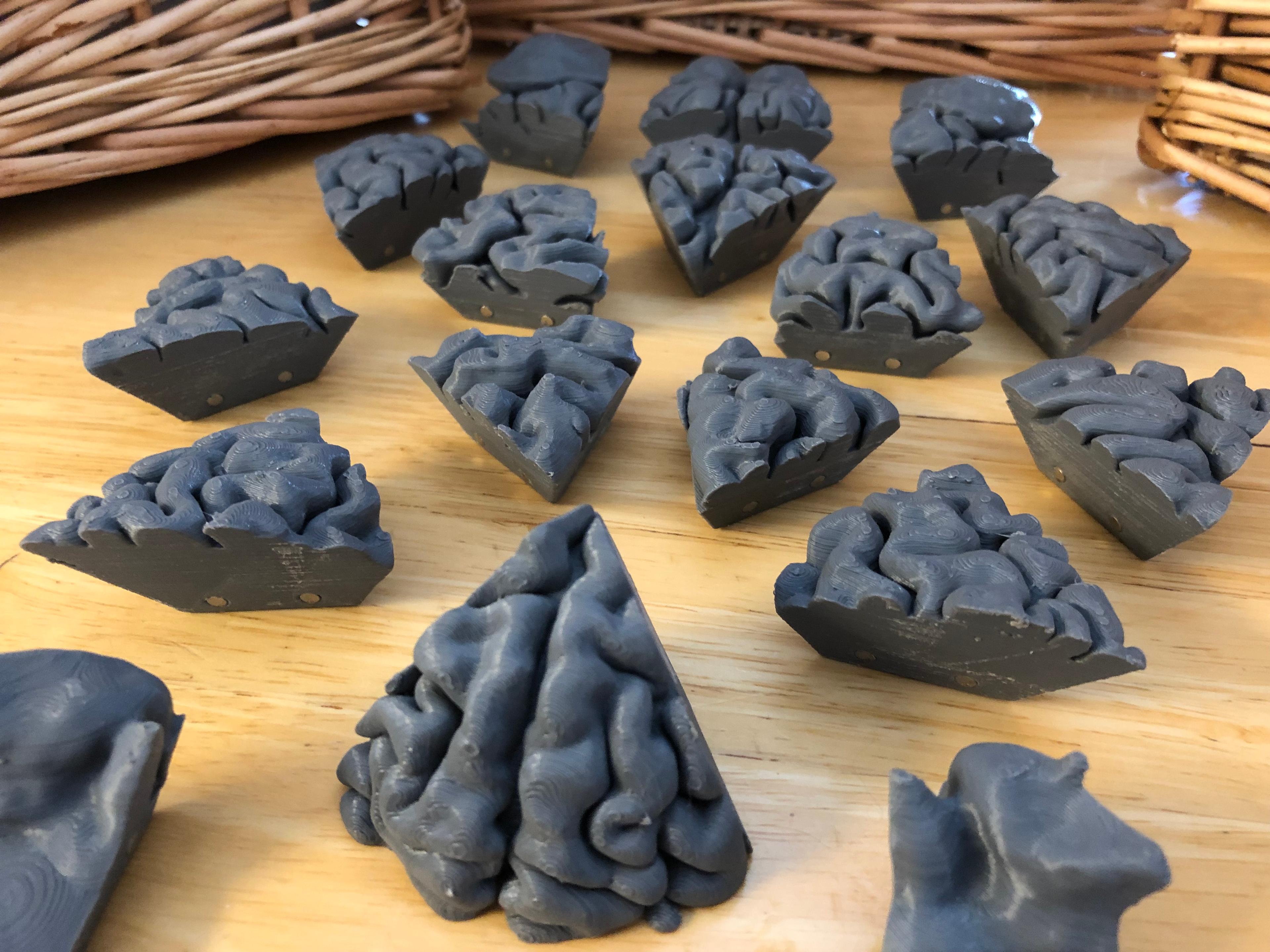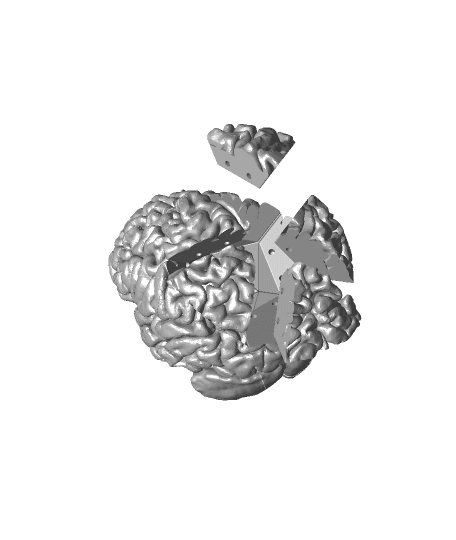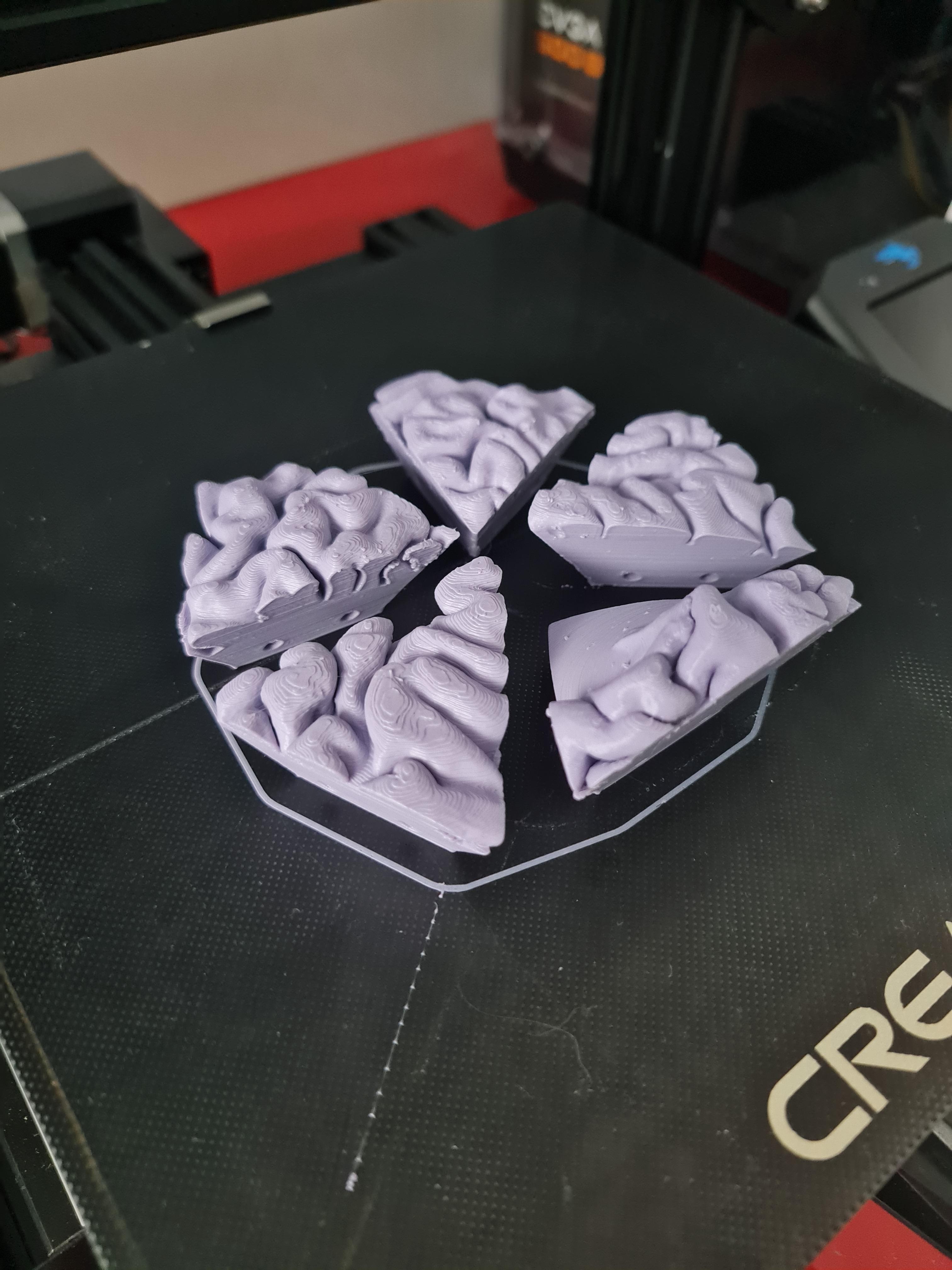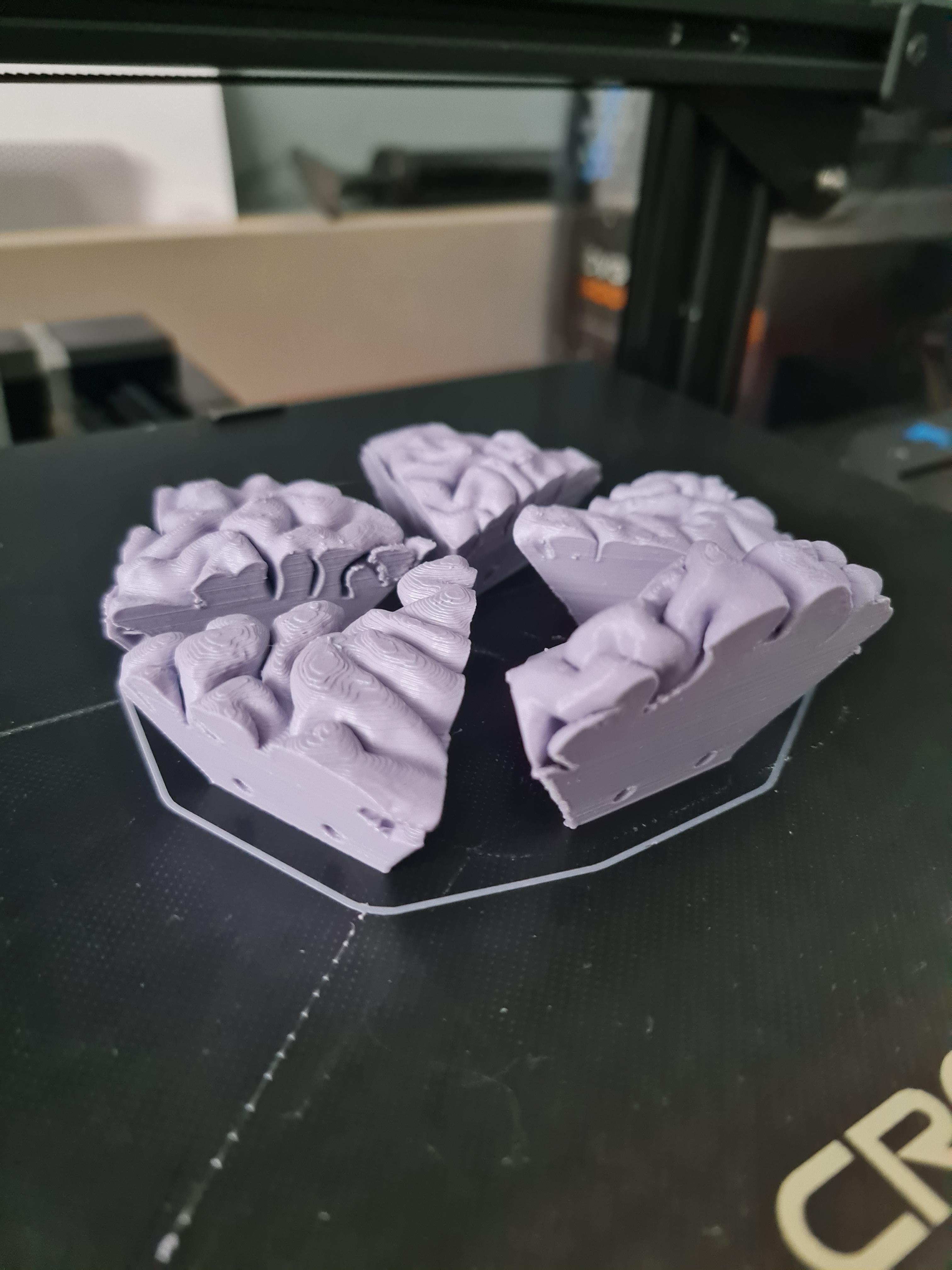Brain Teaser
It’s harder than it looks!
See here for video: https://youtu.be/FRauVma61pM
The puzzle is based on a 20-sided icosahedron. Each edge has holes for a pair of 3mm x 3mm (or 1/8 x 1/8 inch) cylindrical neodymium magnets to hold it all together. Each piece requires 6 magnets, so you’ll need 60 all together.
The files are grouped in to "Frontal," "Frontal Edge," "Cerebellar," and "Cerebellar Edge." Each group contains five puzzle pieces. Pieces labeled "Frontal" share a vertex in the frontal lobe. "Frontal Edge" pieces all share an edge with a "Frontal" piece. Pieces labeled "Cerebellar" share a vertex roughly in the area of the cerebellum. "Cerebellar Edge" pieces all share an edge with a "Cerebellar" piece.
Separate files for each are provided, as well as "Combined" files to print groups out together.
You may find it helpful to label the pieces as they come off the printer in order to make it easier to assemble.
If you choose to scale the files, keep in mind that the holes designed for 3mm x 3mm cylindrical magnets will no longer be the appropriate size. Scaled pieces can still be glued together.
The holes for the cylindrical magnets often print with small burrs inside, so it is a good idea to clean them out with a 1/8 inch drill bit before inserting the magnets.
It is important to pay attention to magnet polarity or the pieces won't snap together! The pair of magnets on each edge are inserted with opposite polarity. Maintain the same pattern around each edge and across each piece. Use a dab of CA glue to hold the magnets in place.
Reference brain file from BodyParts3D, © The Database Center for Life Science licensed under CC Attribution-Share Alike 2.1 Japan
